Erik Qualman's Blog, page 647
November 26, 2012
Gangnam Style becomes most popular video of all-time

South Korea’s PSY bumps off Justin Bieber to become YouTube’s most viewed video of all-time. Gangnam or Gangnam District is an affluent are of South Korea. It literally means South of the River. Gangnam Style is rapdily approaching 1 billion views.
Click here for Gangnam Style on YouTube
[image error]
"Gangnam Style" by PSY
[image error]
November 25, 2012
Black Friday 2012 = Record Online Results

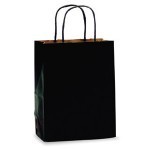 Record Online Sales for Thanksgiving, Fuels Black Friday Retail Surge, Reports IBM
Record Online Sales for Thanksgiving, Fuels Black Friday Retail Surge, Reports IBMMobile Commerce Exceeds 16 Percent of Online Sales, led by the iPad:
According to IBM US shoppers once again took advantage of early promotions this holiday season, driving a 17.4 percent increase in online sales Thanksgiving Day. This increase set the stage for 20.7 percent growth on Black Friday.The biggest surge came from mobile consumers, with sales reaching 16.3 percent, led by the iPad. This data is the result of cloud-based analytics findings from IBM.
The IBM Digital Analytics Benchmark revealed the following trends:
Consumer Spending Increases: Online sales on Thanksgiving grew by 17.4 percent followed by Black Friday where sales increased 20.7 percent over last year.
Mobile Shopping: Mobile purchases soared with 24 percent of consumers using a mobile device to visit a retailer’s site, up from 14.3 percent in 2011. Mobile sales exceeded 16 percent, up from 9.8 percent in 2011.
The iPad Factor: The iPad generated more traffic than any other tablet or smartphone, reaching nearly 10 percent of online shopping. This was followed by iPhone at 8.7 percent and Android 5.5 percent. The iPad dominated tablet traffic at 88.3 percent followed by the Barnes and Noble Nook at 3.1 percent, Amazon Kindle at 2.4 percent and the Samsung Galaxy at 1.8 percent.
Multiscreen Shopping: Consumers shopped in store, online and on mobile devices simultaneously to get the best bargains. Overall 58 percent of consumers used smartphones compared to 41 percent who used tablets to surf for bargains on Black Friday.
The Savvy shopper: While consumers spent more overall, they shopped with greater frequency to take advantage of retailer deals and free shipping. This led to a drop in average order value by 4.7 percent to $181.22. In addition, the average number of items per order decreased 12 percent to 5.6.
Social Media Sentiment Index: Shoppers expressed positive consumer sentiment on promotions, shipping and convenience as well as the retailers themselves at a three to one ratio.
Social Sales: Shoppers referred from Social Networks such as Facebook, Twitter, LinkedIn and YouTube generated .34 percent of all online sales on Black Friday, a decrease of more than 35 percent from 2011.
“This year’s holiday shopper was hungry for great deals and retailers didn’t disappoint, rolling out compelling offers which consumers gobbled up on Thanksgiving straight through Black Friday,” said Jay Henderson, Strategy Director, IBM Smarter Commerce. “The big winners were chief marketing officers who used technology to deliver customer experiences that not only connected shoppers with personalized deals but did so at the right touchpoint and at precisely the right time and place, whether on their couch or the store floor.”
“To remain relevant, retailers must find opportunities to participate in holiday rituals in ways that aid consumers’ attainment of the holidays they imagine — enjoying time with family and shopping when convenient,” said Tonya Bradford Assistant Professor, Mendoza School of Business, the University of Notre Dame.
“Technology provides more opportunities for retailers to create these experiences for consumers through their mobile computing devices.”
Holiday sales growth was led by several industries, which include:
Department stores continued to offer compelling deals and promotions that drove sales to grow by 16.8 percent over Black Friday 2011.
Health and Beauty sales increased 11 percent year over year with consumers once again choosing to pamper themselves this holiday.
Home goods maintained its momentum this year, reporting a 28.2 percent increase in sales from Black Friday 2011.
Apparel sales were also strong this holiday with Black Friday numbers showing an increase of 17.5 percent over 2011.
Today’s news is based on findings from the IBM Digital Analytics Benchmark, the industry’s only cloud-based Web analytics platform that tracks more than a million e-commerce transactions a day, analyzing terabytes of raw data from 500 retailers nationwide.
[image error]
November 20, 2012
45 Amazing Social Media Statistics from the 2012 Presidential Race

The 2012 election shattered social media records from every angle, with election night taking the crown for most tweeted event ever. A picture posted and tweeted by Obama after winning the election beat the previous Facebook and Twitter records for most retweets and ‘Likes’ ever, hitting 800,000 retweets within a few hours and over four million ‘Likes’ within a few days.
Enjoy the record-breaking social media statistics below, and download our white paper 160 Amazing Social Media Statistics from the 2012 Presidential Race to relive all the excitement leading up to Election Day.
For more insights on the social impact during the 2012 election, download our white paper 160 Amazing Social Media Statistics from the 2012 Presidential Race. We’re always sharing interesting tidbits on Twitter, so join us there!
[image error]
Tweet This! Top Tips Behind Successful Social Media Campaigns

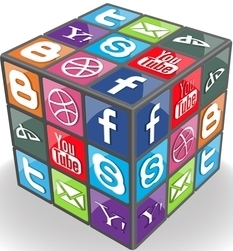 Have you ever wondered what it takes to run a successful social media campaign? You know, the ones that grab a reader’s attention from the start, with videos going viral while spawning memorable Internet memes? The ones where everyone is re-tweeting a creative image or story, tagged with the brand’s logo or other identifying characteristics?
Have you ever wondered what it takes to run a successful social media campaign? You know, the ones that grab a reader’s attention from the start, with videos going viral while spawning memorable Internet memes? The ones where everyone is re-tweeting a creative image or story, tagged with the brand’s logo or other identifying characteristics?
Internet news site Mashable covers successful social media campaigns on a regular basis. It noted that usually the best campaigns feel like well-oiled machines. But its authors asked a crucial question – “How do you make each and every user who interacts with the brand on a handful of platforms feel like his interactions with the company are personal and unique?”
Advertising Age compiled a list of the best social media campaigns from the recent past. In the list were these amazing executions:
Heinz developed a UK campaign based around its Facebook fans at the start of the cold and flu season. For $3, Heinz’s Facebook fans could send cans of soup to their sick friends through its social promotion. Soup was delivered to the recipients in a couple days, with the sender’s name and targeted greeting included.
The tiny town of Obermutten, Switzerland used social media to prop up tourism efforts. It launched a video on its fan page declaring everyone who liked the page would get their user photo added to the town’s real message board. As of October 2012, the tiny town fan page had over 45,000 likes.
Small Business Saturday, a campaign led by American Express, brought shoppers to local retailers on the Saturday after Thanksgiving in 2011. Facebook offered ad credits to participating retailers, and fans flocked to the site. The program was geared to help local retailers target customers who wanted to shop local and keep money flowing into the communities in which they operated. The promotion will happen again on November 24, 2012.
Marketing research shows awesome social media campaigns can dramatically improve profits. Millward Brown studied European companies and found more than 80 percent of high growth organizations using social media tools reported ‘a significant impact on their growth.’ And eMarketer wrote about a separate social media study: “Fully 84% of executives polled said that social media campaigns had increased effectiveness of marketing and sales efforts, while 81% said a social media presence had helped companies increase market share.”
If you’re wondering how to replicate tactics and strategies behind some of the best social media campaigns around, you’ll need to study the basics first.
One example involves department store retail brand Macys.com, which has 800 stores worldwide as well as a significant Internet presence. There were many movable parts in its well-coordinated social media strategy. From updating images to posting videos and tweeting, Macy’s solid team of innovators managed all aspects of their excellently orchestrated campaign. Mashable noted the brand’s use of all aspects of social media at its fingertips to create relevant, compelling content that’s a perfect fit for all fans.
Another list of top social media campaigns with user-generated content showed the lure of winning free travel as a big advantage. The country of Iceland ran a social media campaign in 2011 asking people to become friends with Iceland. Users sent submissions of themselves spending time in the country, with breathtaking images, high-quality video clips, and it became a terrific source of spectacular imagery for user-generated content.
The pros agree: There are tips, strategies and tactics that can boost the viral potential of social media campaigns. Here are a few that can help you begin to integrate social media campaigns that build followers, drive SEO awareness and ultimately bring business to your company.
Get Your Social Media Names Secured
Right now, do this first: get your brand names or company names and register them on social media sites. Go to Google, Twitter, Facebook, YouTube, Pinterest, Tumblr and others and register all the names you’ll be using on social media. From product names to company initiatives, all is fair game and can help your company build substantial presence.
Check Current SEO
Use a social media marketing company to do a good audit of your website. Make sure your company’s website title and meta tags (that allow it to be searched on search engines) are optimized. Check page load speeds. The last thing you want is to drive fans to your home page if it’s not loading well.
Social Media Share Buttons
All those buttons next to your site’s blog posts and articles allow users to share content across their networks. Make sure those buttons are easily seen and work for sharing. Even casual visitors to your site might be compelled to share something or follow your brand online.
Sharing Good Content
 The best way to get followers online is to create and distribute good content. What you choose to share could be humorous content, socially conscious material or just plain open and transparent communications about your company and brand. All of these work for particular companies. See what works best for your brand.
The best way to get followers online is to create and distribute good content. What you choose to share could be humorous content, socially conscious material or just plain open and transparent communications about your company and brand. All of these work for particular companies. See what works best for your brand.
Online users who see this content can learn more about your company by following you on Twitter or Facebook. Make sure your company videos are embeddable, so that interested bloggers can use them on their pages.
Building Links for Content
The best way to build up SEO presence via social media is by having consistent, great content to which other sites will link. Search engines rank web pages by the quantity and quality of the inbound links to that page. To do this right, try syndicating every new blog post via social media. You can also go deeper and build content onto social news sites, distribute press releases and write articles for sites that accept content.
All these tips will help your brand gain more SEO juice and social media awareness as you build your brand. Social media can help your brand when you treat it as a integral part of your overall marketing campaign.
[image error]
Tech-Savvy Moms: 9 Months with 4G [INFOGRAPHIC]
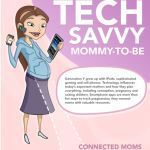
Technology and social networking sites influence the way women experience conception, pregnancy and motherhood. More than half of moms rely on their smartphones for staying up-to-date on trends and learning the latest information in motherhood. Also, contraction timers, weight analyzers and week-by-week pregnancy tracking apps are excellent tools for moms-to-be.
This infographic was provided by PartyPail.
[image error]
November 19, 2012
Get Social When Looking for Best Credit Card Offers

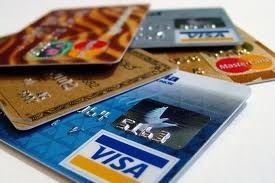 With the holidays fast approaching, many consumers are likely wondering how they can best go about saving money.
With the holidays fast approaching, many consumers are likely wondering how they can best go about saving money.
Whether it is purchasing gifts for loved ones, friends, co-workers or even themselves, many consumers are fighting a tough economy, while at the same time trying to find the best deals on products and services.
For those who dare to put a number of purchases on plastic, there are credit card deals out there, but it certainly helps to know where to look.
Be it a new credit card or trying to get the most out of your current plastic, using online tools, especially social media to see what the respective companies are offering, never hurts.
You should start by visiting the Facebook/Twitter/Pinterest pages etc. of card providers to see what their respective sites offer.
For example:
American Express – On its Facebook page, the company offers information on savings it offers card customers. To date, the company has more than 2 million “likes” on its page;
MasterCard – On its Twitter page, the company makes note of how using the card can not only help customers, but also benefit charities, fight cancer and more. To date, the company sports more than 29,000 followers;
Discover Card – On its Pinterest page, the company shows consumers a variety of products that can be purchased, of course with savings when using their Discover Card.
In the event you turn to social media to help you in shopping for a credit card, take note of the different providers and their usage of social networks. Look to see if they:
* Update their sites regularly:
* Provide relevant content, including links to financial news that can impact your decisions in using plastic or not;
* Engage consumers when it comes to their questions and concerns. If they are giving so-so customer service on social media sites, can their service with your particular credit card matters be any better?;
* Are increasing their likes and followers. If they seem to be “buying” or losing followers, it may give you pause to do business with them.
Another item to keep in mind is making sure you get alerts from the different card providers when they are offering things such as cash back, gas cards, travel rewards, 0% rates and more.
Lastly, look online for comparison sites that allow you to review countless credit cards in a short amount of time. A large number of the sites offer consumers debt calculators, giving individuals the ability to tally what using cards will mean to their individual finances, along with how long it will take to pay off any debts.
Whether you have one or several credit cards in your wallet or purse, turning to social media for financial education, deals and more just makes good “cents” in today’s economic world.
Photo credit: mybudget360.com
[image error]
November 16, 2012
The pros and cons of buying Twitter followers
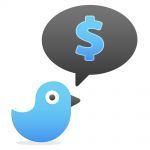
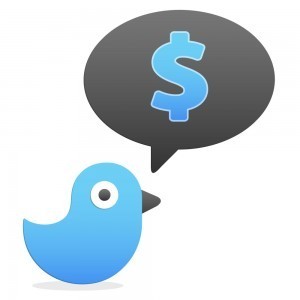 The concept of buying popularity online might seem like a new one to some, but it has been around for as long as the social media trend itself. For a few years now, outsourcing websites such as Elance, Freelancer and Odesk have been offering such services, and a quick google search reveals that businesses are able buy Twitter Followers, Facebook Likes and Youtube Views from hundreds of different websites.
The concept of buying popularity online might seem like a new one to some, but it has been around for as long as the social media trend itself. For a few years now, outsourcing websites such as Elance, Freelancer and Odesk have been offering such services, and a quick google search reveals that businesses are able buy Twitter Followers, Facebook Likes and Youtube Views from hundreds of different websites.
In fact, Google Adword keyword tool shows that over 70 000 Google searches are performed monthly for the keywords “buy Twitter followers”, and over 130 000 for “buy followers”, confirming that this once well-kept secret is rising in popularity.
In 2012, this controversial practice has seen an increasing amount of interest from businesses, after a flurry of news reports exposed to the public that presidential candidate Mitt Romney’s Twitter account saw an increase of 100 000 followers in one weekend, a much faster rate than usual, raising questions about their legitimacy. Similar claims were also lobbed at Newt Gingrich and President Obama.
According to BuyMoreFans.co.uk, “buying Twitter followers makes businesses look more credible and established”, and it appears to be a popular trick especially for new ventures. It is also supposed to create an illusion of social proof that will most likely inspire trust from new potential customers and therefore increase sales.
On the other hand, Vuki Vujasinovic from ClickPR considers it as a “waste of time and money”, and would never recommend such services to his clients. “When you buy fans, you get little to no interaction”, he says. Another con is that a potential loss in followers might occur over time. Mark Johnson confirms that in about 3% of the cases a slight amount of the purchased fans will ‘un-follow’ his clients’ accounts, and he warns customers to buy only from legitimate websites that offer a 100% retention guarantee and are willing to re-deliver the lost followers free of charge.
The practice, considered by some as unethical, is not a replacement for the conventional marketing efforts needed to build any successful venture, but is definitely rising in popularity(especially amongst startups), and can be considered as one of the many tools at your disposition to build a marketing strategy for your business.
[image error]
November 15, 2012
Predicting the Presidential Election with Social Reach and Sentiment

Conflicting data
First things first: Romney was far more engaging on social media than Obama. Our analysis found that Romney had 4.5x the engagement rate on Facebook and 18.5x the engagement rate on Twitter. Yet, social media data confidently predicted an Obama win. Read on to learn how Obama won the election on both social media and at the polls.
Our social world
The 2012 Presidential election illustrated the power of social media, shattering previously-held records for most-talked about events socially regularly. We covered the lead up in our whitepaper “160 Amazing Social Media Statistics from the 2012 Presidential Race,” but wanted to compare our original findings against the election results.
Election night garnered 31 million tweets, peaking at 327,452 tweets per minute when the election was called. It is the most tweeted about event in history. That same night, a picture Obama tweeted and posted broke both the Twitter and Facebook records for most retweets and ‘Likes’, hitting 800,000 retweets within 24 hours and over 4 million ‘Likes’ within a few days.
Image 1: This image, with the caption “Four more years”, shattered Twitter and Facebook records
The important role social media held this election allowed us to analyze the social presence and conversations surrounding both candidates leading up to the November 6th election, providing information on the overall reach, engagement, and sentiment that favored an Obama win according to the social universe.
Sentiment in social
Obama’s social win was predicted by two factors: the size of his following and the conversations about him, and the sentiment surrounding the candidates. Social insight company Topsy rated social sentiment for Obama at 35/100, with Romney trailing by ~17% at 29. Furthermore, our analysis of the third and final debate rated 31.3% of tweets surrounding Obama as positive, compared to only 18.5% of tweets for Romney. Even when Romney saw an increase in social mentions, such as his September 17th social peak with 927,000 Twitter mentions, the majority of those comments were negative backlash for his comment on “the 47%”.
Social media: Size does matter
With a combined total of 53.3 million Facebook and Twitter followers during election season, Obama enjoyed much greater reach than Romney with his combined 12.1 million followers. Obama held the advantage of more “social relationships” going into the Presidential election, having built up his social media following with a national audience in his 4 years as President.
Image 2: Obama enjoyed a much stronger social presence throughout election season
To put it another way: well before November 6th, 10% of the country had already expressed an interest in voting for Obama via Facebook, while only 3% expressed an interest in Romney through ‘Liking’ his page. With the inherent nature of social, Obama’s 10% could reach a level of virality much greater than Romney’s 3%, while also influencing conversations surrounding Romney to maximize negative sentiment.
More than Obama’s personal reach with social media, his large following also suggested greater social engagement for Obama even without fans directly interacting with his posts and tweets. During the Democratic and Republican conventions, Obama’s camp garnered far greater engagement on Twitter, reaching 53,000 tweets per minute after his speech versus 14,000 tweets per minute after Romney’s. Even though Romney’s audience engaged more with his tweets, Obama’s audience was larger and more engaged as an aggregate with the entire spectrum of political activity on Twitter, suggesting a higher percentage of active Obama supporters off-line as well.
Even when Obama’s supporters weren’t interacting with all of his posts, Romney’s mistakes may have acted as catalysts to rile this group up, causing them to share with their networks and create negative virality for Romney, with incidents such as the infamous “Binders full of women” comment spurring reactions like a parody Facebook page that drew almost 300,000 ‘Likes’ overnight. The size of Obama’s social following likely influenced the overall sentiment surrounding both candidates and influencing the election results from multiple angles.
The next four years
Social and digital media played an important role this election, with digital ad spending almost 15x higher than just four years ago according to iMediaConnection. We can only assume that the next election will feature even greater growth, with tablets, smartphones and social media changing the way we communicate and influence each other. For most insightful statistics from the 2012 election, download our whitepaper “160 Amazing Social Media Statistics from the 2012 Presidential Race”.
How did the election affect your personal Facebook and Twitter feeds? Did you find the messaging effective? Did you donate more or less as a result of social media conversations and advertising? Continue the conversation in the comments below, or connect with me on Twitter.
[image error]
Maximize Facebook: Building Your Brand Online

Building your brand online is hard. Everyone it seems like the newest, greatest social media site has launched, and yesterday’s hot thing goes the way of Friendster or MySpace. But even with whatever Tumblr or Pinterest site comes next, there are a few big boys that are probably here to say. The biggest, of course, are Twitter and Facebook. Both offer incredible possibilities for those looking to grow their brand on line, and the best part about it is they are also both free to use.
Facebook in particular offers a unique format that is ideal marketing yourself and directly interacting with your potential clients and customers. It’s important to new users to understand the strategies that will best allow them to reach a broad audience and actually connect with them in a real and meaningful way. And at the very least, you can still use Facebook as an almost inexhaustible resource for information.
Personalize your page as much as you can. Create a custom tab that lands non-fans to an abridged landing page. (Facebook allows this) This way those who are visiting for the first time can get a quick idea as to what you are, what you are all about, and view at least one prominent call to action, such as to visit your website. Asking people to “like” your page, by the way, greatly increases the chances that they do so. Do this as much as you can without becoming too obnoxious or needy about it.
Your profile picture is also a huge part of what makes your page successful. This is basically the most prominent “advert” space you’ll have on your whole page. Don’t try and shoe horn in a banner ad here, but find something that really gets across who you are and what you do. After you get more than 25 follows, your URL optimizes, making it easier to remember and easier for people to reference. After you’ve reached 25 fans, you can go to facebook.com/username to get your URL shortened.
Last but not least, keep your page updated! Post at least once a day, twice if you have something interesting to share. Respond to comments, and follow those that follow you. This is the best way to keep your followers coming back. A few gaps here and there are understandable, but too many for too long can be a real killer for sustaining your popularity.
Facebook can give a lot back to you, and it really doesn’t take a lot of effort to reap the rewards. What are you already doing to get the most out of Facebook? Let us know!
Ed Michelson is a social media and real estate expert who buys and sells homes for We Buy Ugly Houses Colorado.
[image error]
November 14, 2012
Some Companies Finding the Energy to Use Social Media

While some lines of business have taken social media and run with it, others have found themselves suffering a power shortage
For those a step or two behind, the need to get on the social media train is today and not tomorrow. Otherwise, companies stand to not only lose out on potential revenue, but they also can be seen by some consumers as being out of touch in today’s technological world.
One industry that has been seeing some transformation when it comes to properly utilizing social media is the energy sector.
According to a report from the SMI-Wizness Social Media Sustainability Index, the number of businesses in its index using social media as a means to communicate sustainability more than doubled in just the last year.
During 2010, the report noted that 120 of the 287 businesses in its index participated to some degree in social media, using venues like Facebook, Twitter and YouTube, with only 60 companies putting forth resources for the mission. One year later, 250 major businesses utilized sustainability communications via social media, while 100 companies put forth resources towards such efforts.
One of the major corporations using social media to enhance its brand and engage with consumers has been General Electric.
The giant has used social media to crowd-source ideas in order to discover innovative solutions to sustainability challenges.
Meantime, a number of electric companies have used social media in the last few weeks to reach out to communities in the greater New York – New Jersey area hard hit by Hurricane Sandy.
While power outages have hampered some communications, a number of electricity providers such as Con Edison have been updating their social media venues to let customers know about the progress of restoring power. Customers who have been able to utilize power at the homes of friends and relatives, area libraries, or other means can use the sites for regular information from their respective power providers.
In an ironic twist this summer, a number of utility companies took to their Twitter and Facebook pages, asking customers to conserve energy during a series of heatwaves. The hope was that alerting customers would help avoid blackouts and other problems with the system.
While serious events such as heatwaves, blizzards, tornadoes or hurricanes can have a major impact on electricity, a number of utility companies and the industry in general also use social media in quieter times to educate users on how they can save energy and make for a cleaner environment.
Of course, the challenge is getting the attention of the customers, many of whom are distracted with other events in their lives, that is until they lose their power.
Photo credit: powertochoose.org
[image error]







